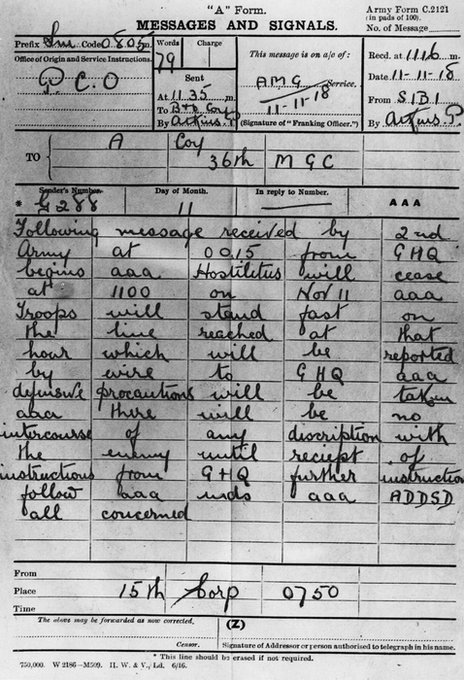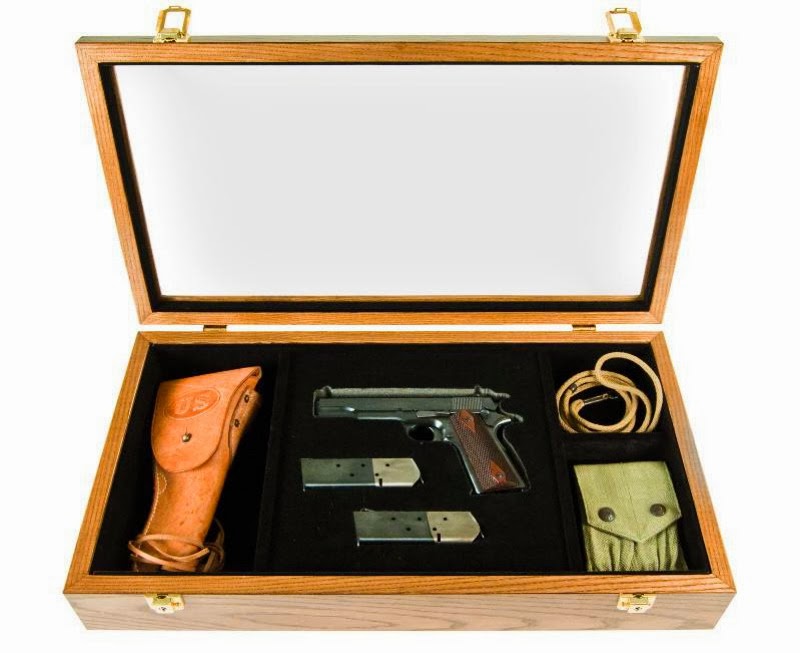Today, November 11th is Veterans Day. It is a day in which we honor all of veterans. To which I would like to offer my sincere thanks to all who have served in our armed forces.
However, this post will be about an earlier time. Before 1954, November 11th was known as Armistice Day. It commemorated the armistice which ordered the cessation of hostilities and ended World War I. The telegram below shows the orders received by Allied units on the Western Front.
 |
| Found on Tumblr |
Thus, at “eleventh hour of the eleventh day of the eleventh month” of 1918, the war ended.
You would think that with the cessation of hostilities scheduled for 11 am that most soldiers and most units would do everything in their power to avoid any contact with the opposing forces. You would be wrong. There was still fighting that November morning and men still died.
The last British soldier to die was George Edwin Ellison who was shot while on patrol in Mons, Belgium at 9:30 am. He is buried near Mons and his grave faces that of John Parr who was the first British soldier killed in 1914.
At 10:45 am on the November day, Augustin Trébuchon became the last French soldier to die. Because the French were embarrassed for having sent soldiers into battle without knowledge that the Armistice would begin that morning, they listed the date of death as November 10th. This was corrected in 1998.
George Lawrence Price, a Canadian soldier, was killed by a German sniper at 10:58 am. He had been in a house near Ville-sur-Haine, France and had been warned about snipers in the area.
While the United States did not enter the war until 1917, we had the last soldier to die during WWI. He was Private Henry Gunther of Baltimore who died at 10:59am. Gunther was assigned to Co. A, 313th Infantry Regiment, 79th Division.
From Obit of the Day:
Private Henry Gunther, of Baltimore, had learned of the planned cease fire at 10:30 a.m. He and his company remained pinned down by German machine gun fire waiting for the minutes to pass.
But in a surprise to his compatriots – and the Germans – Private Gunther scrambled out of his foxhole, rifle in hand, and began to charge the gun battery. The Germans pleaded with the 23-year-old to stop his charge reminding him that the war was soon to end but he continued running and firing his rifle. They had no choice but to return fire.
Private Henry Gunther died at 10:59 a.m. on November 11, 1918. The last soldier killed in action in the conflict later called World War I.
Although he never gave a reason for his actions, Pvt. Gunther was recently demoted from sergeant to private after a letter critical of Army life was intercepted by military censors. A German-American, he was already under some level of suspicion this did not aid his cause. He would tell his fellow soldiers that he wanted to “make good.”
Following his death Private Gunther was returned to the rank of sergeant and awarded the Distinguished Service Cross. His body was returned home and buried in Most Holy Redeemer Cemetery in Baltimore.
More on Sgt. (then Private) Gunther can be found at the Baltimore Sun.



